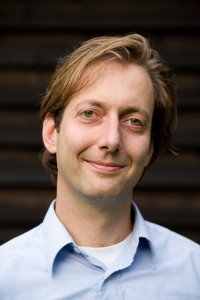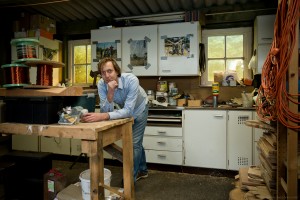I Love Windpower brings wind energy and identity to Mali
“If I had to sum it up in one word, I would say identity,” says Piet Willem Chevalier, owner and operator of I Love Windpower. “On my first trip to Mali, I saw this group of people that were really shy, that didn’t want to ask questions, they had no confidence. After we made that first turbine, we threw a party and it was quite amazing to see how this sense of identity grew.”
One day while driving in the Netherlands Piet became transfixed by a set of wind turbines and literally drove off the road,. He couldn’t have known at that time that this incident would change his life. In a few years he would be bringing wind power to Mali where the poorest communities often pay the highest rates for energy.
One thing led to another and Piet started working as an engineer for Siemens wind. After about a year Piet discovered the work of Welsh engineer, Hugh Piggott. Mr. Piggott is the inventor of an open source, affordable, small-scale wind turbine design. Piet invited Hugh to come and teach a workshop in the Netherlands. It took some convincing, but Mr. Piggott finally agreed.
That workshop taught Piet how to build these turbines, and in doing so it changed Piet’s life. Piet knew that he needed to take this new skill and technology to a place where it would be most beneficial and he could pass it on. One of his best friends was from Mali and he figured that Mali was as good as anywhere else to get started. He founded I Love Windpower, a Netherlands based NGO, then designed a course that was easy to teach, transcended language barriers and used readily available materials. He flew to Mali and within two weeks, he and a team of 10 local people, five who couldn’t read or write and five who couldn’t speak any French, built a better turbine than Piet himself had done.
The wind turbines, while delivering energy to the homes, also had an unexpected impact. Two men participating in the workshop were from different tribes that for the last 20 years hadn’t spoken. During the workshop the two men became great friends and now the tribes are talking to each other again. The sense of identity and ownership derived from this wind turbine project has been remarkable.
“This is something that I never realised when starting this. Even if this project is going to fail completely and they never make a business out of it – which I still believe is possible and just takes some more time – every investment has accomplished so much from a social and identity perspective,” commented Piet.
Piet is no longer working alone. He works closely with business partner Joost Sterenborg and Yvonne Gerner the landowner in Mali. They are also working with Wind Empowerment, an association that shares experiences and knowledge on locally built small wind turbines and try to align their projects to develop solutions. Furthermore, I Love Wind Power is now expanding to Brazil.
Recent events in Mali have threatened I Love Windpower’s projects. The unrest that Mali has been plunged into since early 2013 isn’t making things easy. I Love Windpower can’t send volunteers to the country anymore. Instead, if they can secure funding, they will bring several promising individuals from Mali to the Netherlands to continue their training. Although the initial group did an excellent job of producing turbines, I Love Windpower is now eager to share knowledge about business management to make it viable for the Malian people to produce a sustainable business.
“One thing we figured,” says Piet, “war or no war, hunger or no hunger, life will go on for the people.” He mentions that in war electricity is very important, even if simply to listen to the radio to find out what is going on.
Whichever direction Piet and his colleagues manage to go, one thing remains certain, small-scale wind turbines are helping build community and identity while providing much needed electricity to Mali.
This blog post is part of a series of wind energy stories from photographer Robert van Waarden.








